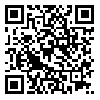BibTeX | RIS | EndNote | Medlars | ProCite | Reference Manager | RefWorks
Send citation to:
URL: http://ijdld.tums.ac.ir/article-1-5291-en.html

 , Farideh Razi *
, Farideh Razi * 
 2, Mohammad Reza Mobinizadeh3
2, Mohammad Reza Mobinizadeh3 
 , Alireza Oliaei Manesh4
, Alireza Oliaei Manesh4 
 , Bagher Larijani1
, Bagher Larijani1 

2- Diabetes Research Center, Endocrinology and Metabolism Clinical Sciences Institute, Tehran University of Medical Sciences, Tehran, Iran ,
3- Department of Health Services Management, Science and Research Branch, Islamic Azad University, Tehran, Iran
4- National Institute for Health Research, Tehran University of Medical Sciences, Tehran, Iran
Background: Diabetic patients need to be followed for glycemic index regularly and HbA1c test is one of the most important biochemical markers for patient monitoring. HbA1c should be standardized based on international standards, but using internationally accepted assays are expensive. This study aimed to evaluate cost effectiveness of different assays which are currently used in Iran.
Methods: In this economic evaluation study, five HbA1c assays (Pars Azmoon, NycoCard, DS5, Biosystems and CERA STAT 2000) have been evaluated for cost, sensitivity and specificity, true score and also incremental cost-effectiveness ratios. Tosoh G8 has been considered as reference method.
Results: Although none of the assays can be a good alternative for reference method, DS5 and pars azmoon had better cost effectiveness results compared to other assays.
Conclusion: The quality of HbA1c assays need to be improved by using real tariff or the establishment of referral labs.
Received: 2014/12/20 | Accepted: 2015/04/19 | Published: 2016/01/24
| Rights and permissions | |
 |
This work is licensed under a Creative Commons Attribution-NonCommercial 4.0 International License. |



